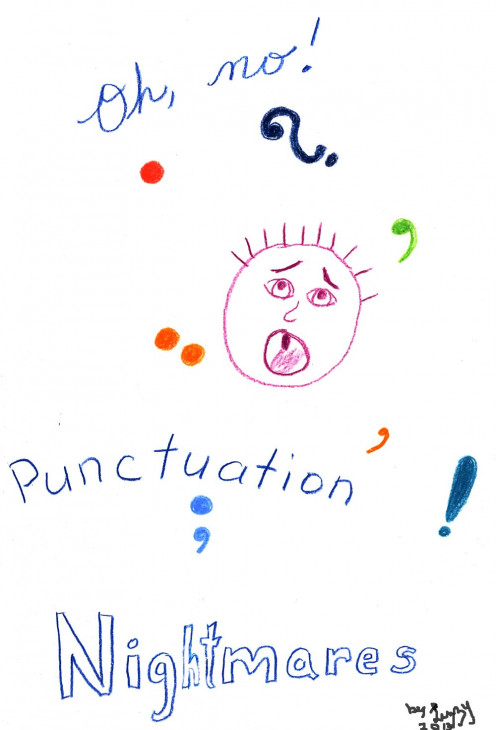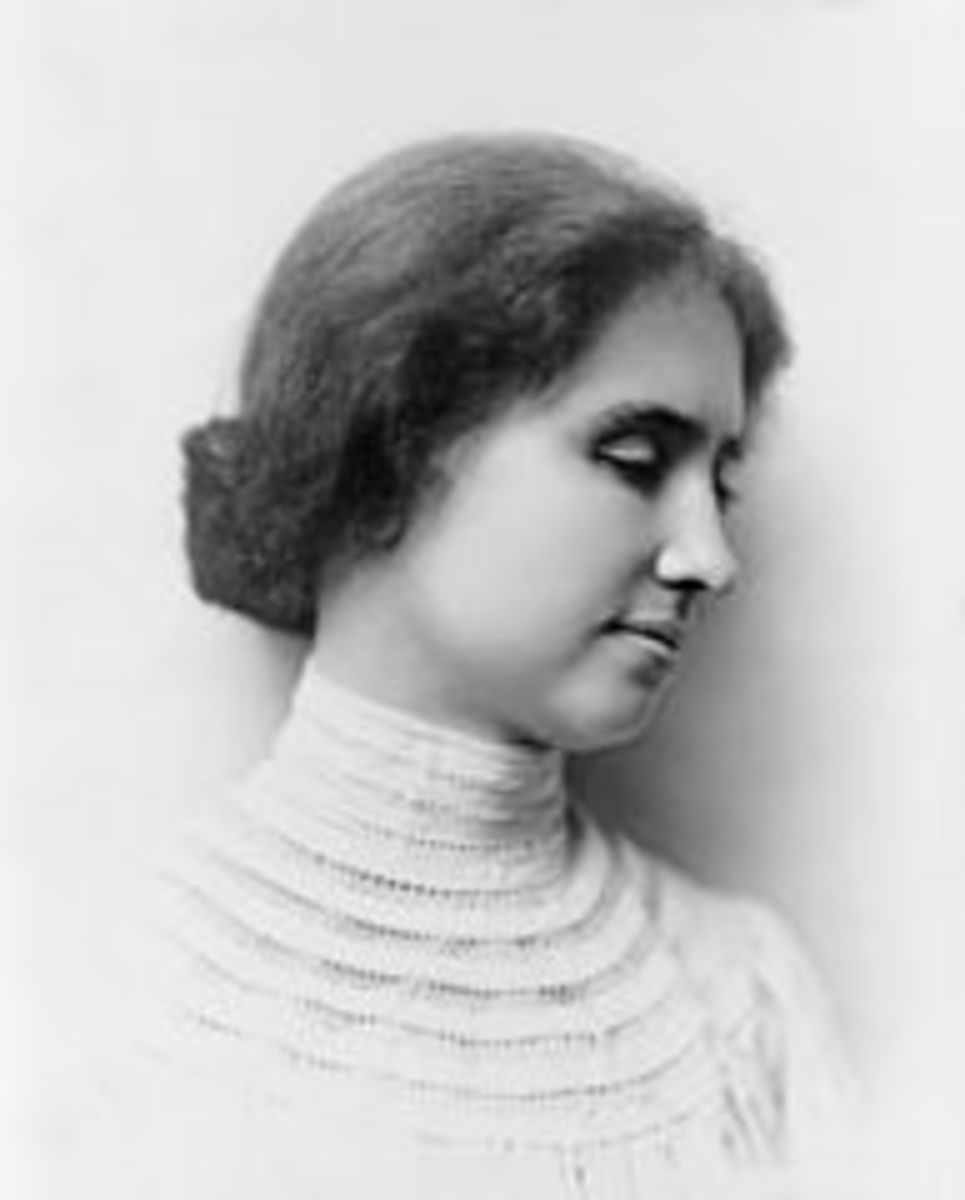Punctuation: Another Language Problem

Punctuation--the Other Pesky Problem
I've written about confusions with words and writing clearly, but I have yet to address punctuation. Now I will. Some people may think it is an unimportant detail, but it absolutely is not.
Something as simple as a small dot or comma can change the entire meaning of a sentence. As the saying goes, "the devil is in the details." That small dot has so much importance in everything from writing to music to finances. Its correct or incorrect placement can make worlds of difference in the end result or amount.
Any computer programmer also knows the value of such a small detail.The addition or omission of the correct punctuation in the computer's programming can cause all manner of errors, from simple failure to work at all, to mind-boggling failures.
The Lowly Comma
Changing the Meaning:
While the comma may seem insignificant, it has a very important role. It serves to separate related thoughts so that they are easily understood. It represents a pause or break that is not the same "full stop" of a period.
Sometimes, it can even change the meaning of a sentence entirely. For example, any parent knows playing favorites among their children is a bad idea. You would never say to little Johnny, "You are my favorite, Johnny." In this example, the meaning is that he is your favorite of all your own children.
Now, if we re-write it, minus the comma, it becomes, "You are my favorite Johnny." The meaning has shifted to stating that he is your favorite among all children named "Johnny."
Since my children are all grown and out on their own, I use this particular construction all the time in speaking to my cats. We have 6 cats, and I love them all dearly. (Not that cats understand these nuances, of course, but just because it is true.) Therefore, I will tell one that "You are my favorite Bobbie," and another that, "You are my favorite Munchkin," and so forth.
Something as small as a period or comma can change the whole meaning of a sentence.
It can also foul up a computer program.
Punctuate Me!
view quiz statisticsBreaking Up Large Blocks of Text
Read the following sentence:
"It was a sunny day and it looked like a nice day to go for a walk it being neither cold nor hot so I put on my light sweater and headed out the door with my dog."
Yes, you can read it, and yes, you can understand it. However, there are a couple of separate thoughts within that sentence, and they are all run together. Commas serve to separate those thoughts (clauses) one from another. Now, re-read the same sentence with the commas applied:
"It was a sunny day and it looked like a nice day to go for a walk, it being neither cold nor hot, so I put on my light sweater and headed out the door with my dog."
What the comma does in this example is separate a section of the text that is not vital to the overall meaning of the sentence. In other words, the phrase, "being neither cold nor hot," is not essential. It is simply additional information. It could just as well read,
"It was a sunny day and it looked like a nice day to go for a walk, so I put on my light sweater and headed out the door with my dog."
The sentence still stands on its own two feet, so to speak, without the descriptive assistance of the temperature conditions. Without the commas, and with the additional description however, it becomes the dreaded run-on sentence. Commas can stand in for periods in some instances. The sentence in this example could also stand as three individual sentences:
"It was a sunny day. It looked like a nice day to go for a walk, it being neither cold nor hot. I put on my light sweater and headed out the door with my dog."
The style you choose will depend in large part upon your target audience. For adults, the commas work well. For young children, it is better to make several short sentences.
Separating Items in a List
The comma also serves to separate a number of items in a list. For example:
- There are several things on a tray in a memory concentration game. A key, a pencil, a flashlight, a screwdriver, a nail file, and a hammer.
- Before baking a cake, be sure you have all the ingredients on hand: flour, eggs, oil, baking powder, salt, and milk.
You will notice that there is a comma following the last item in the list, and before the word, "and." This is a construction known as "the Oxford Comma." Its use has its proponents and its detractors. I was taught to use it. Use whichever style is favored by those for whom you are writing. If you are writing for yourself, choose what you prefer.
The Apostrophe
I suspect that this one piece of punctuation is responsible for more confusion and pencil-chewing than any other. There are so many different situations in which it is used. The confusion is not helped by the various exceptions and conditions regarding its application and placement.
The Contraction
Probably the most common and first-learned use of the apostrophe is in the contraction, or the blending together of two words spoken or written informally.
- Can't = can not (cannot)
- Won't = will not
- Don't = do not
- Shouldn't = should not
- Couldn't = could not
- Wouldn't = would not
...and so forth.
The Possessive Form
This is the one that drives folks goofy. There are so many different placement conditions and exceptions that many people just say "To heck with it! I won't use any apostrophes at all!" This is folly, however, as it leads to one's writing being misunderstood at best; taken for uneducated and incompetent at worst. Let's begin slow and easy.
The Single Possessive
- The dog's dish
- The lady's dress
- The cat's toy
Single Subject; Multiple Objects:
- The dog's dishes
- The lady's dresses
- The cat's toys
You can readily see that the subjects (dog, lady, cat) did not change, only the quantity of the objects they own. Next is where it gets tricky, as both the spellings of some words and the placement of the apostrophe change.
When there is more than a single subject and multiple objects, the apostrophe shifts its position to the end of the word indicating the subject. Also, the spellings of the words, in many cases, also change to reflect the plural, e.g., lady/ladies.
The Plural Possessive
- The dogs' dishes
- The ladies' dresses
- The cats' toys
The most confusing of the contractions, however, is that dreaded "exception to the rule," and that's the case of "it's" versus "its." Normally, we'd expect to see "it's" as the possessive form, and "its" as...wait a minute here!! What??? No, you can't have it both ways. It's both a contraction and a possessive, so they changed the darned rule!
"Its," minus the apostrophe, is actually the possessive form:
"The book was in bad shape; its binding was torn."
"It's" with the apostrophe, is the contraction for "it is:"
"It's a nice day; let's go for a walk."
Go figure! I think they just did that to confuse people and make them ask questions! (Giggle.)
Tricky Words
As if all this were not confusing enough, there are any number of words which have an entirely different meaning with an apostrophe than without, even though the apparent spelling is the same. A few examples:
No Apostrophe
| Meaning
| With Apostrophe
| Meaning
|
|---|---|---|---|
Ill
| Sick, suffering from illness
| I'll
| I Will
|
Well
| Healthy, or a Deep Hole Dug for Resources
| We'll
| We Will
|
Shell
| Exoskeleton of mollusks, etc. (shellfish)
| She'll
| She Will
|
Cant
| An Angle/Slant/Tilt
| Can't
| Cannot
|
Hell
| A Supposedly Fiery Place
| He'll
| He Will
|
Be very careful of the context when deciding whether or not to leave out that apostrophe.
In the first example, either someone is ill (sick), or is saying "I will (I'll) do the task.
Next, someone has gotten well (or is drilling a hole for water), or is saying "We will (we'll) go to the party.
She has found a shell at the beach, and she will (she'll) take it home with her.
Cant is an angle/slope/tilt, while can't, as we've seen earlier, is a contraction for cannot.
Lastly, someone is either speaking of a rather hot spot, or he will (he'll) buy a new car.
These words do not mean the same thing!! The apostrophe changes their meaning drastically.
Colons and Semi-Colons, Oh, My!
These two bits of punctuation often create confusion as to when each should be used.
The Colon:
Generally speaking, the colon is used to precede a list or a choice or action, thus: confess if you are guilty of misusing these two.
Discussing options, as in cooking; we have many choices:
- baking
- broiling
- grilling
- boiling
- sauteing
There are several other instances in which a colon is the proper or preferred punctuation, but these can get nit-picky and confusing, and usually involve quotations and the circumstances and type of quotation. Most people do not run into those cases on a frequent basis, so I won't confuse the issue by trying to separate it all out here.
The one other instance where a colon is standard procedure is in identifying scripted dialog in a play or movie format:
Bill: I had no idea these mushrooms would taste so good.
Sue: Of course they are good; I cooked them!
Bill: Well, aren't you a little full of yourself today!
Sue: No more than you usually are.
The Semi-Colon
A semi-colon is used to separate multiple items in a a series of lists, or two closely related parts of a sentence, known as "independent clauses." For example:
Some people like water, the beach, and swimming; others like trees, forests, and mountains.
I like dogs; however I prefer cats.
The Period
The end.
That's what the period means. Though it is sometimes used incorrectly for emphasis and effect, such as someone making commentary:
"I. Hate. Broccoli."
That is not standard usage, and should be avoided. When one thought ends and another begins, a period should be used, and not a comma. Using commas incorrectly leads to the dreaded run-on sentence or "comma splice," which makes for very confusing reading.
When in doubt, use a period, and read the section aloud to see if it makes sense. Remember, a full sentence needs both a subject and a verb; sometimes an adjective or adverb as well. For example:
- The sun was shining.
- The sun.
The first example is a complete sentence or thought. The second example is not, for it is missing any description. What about the sun? This attempt at a sentence only names a subject, and gives no further information. If information is missing, the sentence, or thought, is incomplete, and a period is the wrong punctuation.
Consider well your punctuation. Along with spelling and grammar, it has the ability to trip you up and make you appear either intelligent and well-educated, or sloppy, careless and uneducated.
No one said mastering a language and all its nuances is easy. However, it is worthwhile if you value your credibility. You must know the rules in order to know when and how to break them for effect.
Period. Full stop. The end.
© 2014 Liz Elias







